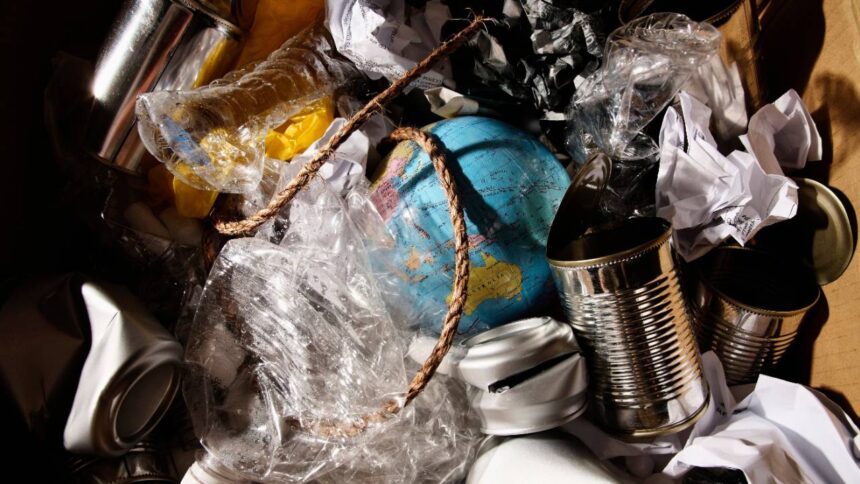The Hidden Hormone Disruptors: How Xenoestrogens from Plastics, Herbicides, and Pesticides Harm Your Health
In our modern world, we’re surrounded by conveniences like plastics, pest control measures, and chemically enhanced agriculture. While these advancements have made life easier, they’ve also introduced a silent threat to our health: xenoestrogens. These synthetic compounds mimic estrogen in the body and can wreak havoc on our hormonal balance, leading to a range of health issues, including estrogen dominance.
Let’s dive into what xenoestrogens are, where they come from, and how they can affect your health.
What Are Xenoestrogens?
Xenoestrogens are chemical compounds that imitate estrogen, a key hormone responsible for regulating reproductive health in both men and women. However, unlike natural estrogen, xenoestrogens don’t degrade or leave the body easily. They accumulate over time, disrupting the endocrine system and overwhelming your body’s natural hormone regulation.
Common Sources of Xenoestrogens
- Plastics:
– Plastics, especially those containing Bisphenol A (BPA) or phthalates, leach xenoestrogens into food, drinks, and the environment.
– Heating plastic containers or using plastic wrap on hot foods increases the release of these harmful chemicals.
- Herbicides and Pesticides:
– Chemicals like atrazine, commonly used in agriculture, act as endocrine disruptors.
– Residues of these chemicals linger on non-organic produce, in groundwater, and in the air, exposing us to xenoestrogens even if we’re not working directly with them.
- Personal Care Products:
– Many cosmetics, shampoos, and lotions contain parabens and synthetic fragrances, which are xenoestrogenic.
- Industrial Chemicals:
– Flame retardants, solvents, and other chemicals used in manufacturing can also contribute to xenoestrogen exposure.
How Xenoestrogens Disrupt Hormonal Health
Xenoestrogens bind to estrogen receptors in the body, mimicking natural estrogen but amplifying its effects. This can lead to estrogen dominance, a condition where the balance between estrogen and progesterone is skewed.
Effects of Estrogen Dominance Include:
– Menstrual Irregularities: Abnormally heavy periods and severe PMS symptoms.
– Fibroids and Fibrocystic Breasts: These non-cancerous growths can cause pain, swelling, and discomfort.
– Infertility: Hormonal imbalances may disrupt ovulation and impair fertility.
– Reproductive Cancers: Prolonged exposure to high estrogen levels has been linked to cancers of the breast, uterus, and ovaries.
Other Health Risks of Xenoestrogens
– Weight Gain: Hormonal imbalances caused by xenoestrogens can lead to fat storage, especially around the hips and abdomen.
– Thyroid Dysfunction: Xenoestrogens interfere with thyroid hormones, leading to fatigue, brain fog, and metabolic issues.
– Immune System Suppression: Chronic exposure may weaken your immune defenses, making you more susceptible to illnesses.
How to Reduce Xenoestrogen Exposure
- Ditch the Plastics:
– Use glass or stainless steel containers for food and drink.
– Avoid microwaving food in plastic containers or using plastic wrap.
- Choose Organic Produce:
– Opt for organic fruits and vegetables to minimize pesticide exposure.
– Wash all produce thoroughly, even if it’s labeled organic.
- Filter Your Water:
– Install a high-quality water filter to remove chemicals like atrazine and BPA from your drinking water.
- Switch to Clean Personal Care Products:
– Look for paraben-free, fragrance-free, and phthalate-free options.
– Avoid aerosol sprays and heavily scented products.
- Detoxify Your Environment:
– Use natural cleaning products instead of chemical-laden ones.
– Limit exposure to industrial solvents and flame-retardant materials.
- Support Hormonal Balance with Nutrition:
– Eat cruciferous vegetables like broccoli, kale, and cauliflower, which contain compounds that support estrogen metabolism.
– Increase fiber intake to aid in eliminating excess hormones through digestion.
Wrapping up
Xenoestrogens are an invisible but potent threat to hormonal health, contributing to conditions like estrogen dominance, fibroids, infertility, and reproductive cancers. By understanding their sources and taking proactive steps to reduce exposure, you can protect your health and maintain hormonal balance.
Start with small changes today—swap out plastic containers, choose organic produce, and prioritize non-toxic personal care products. Your body, hormones, and long-term health will thank you.
Have you taken steps to reduce xenoestrogen exposure in your life? Share your experiences below!
This blog post is meant to empower you with knowledge so you can take control of your health. If you need more tips or guidance, feel free to reach out!
Please rewrite this sentence.
Source link





